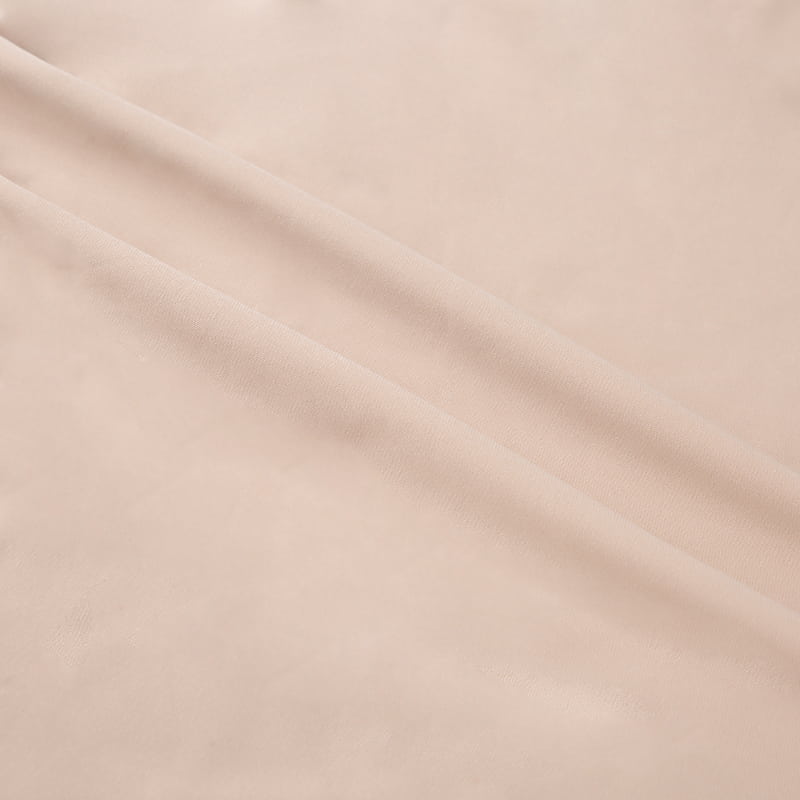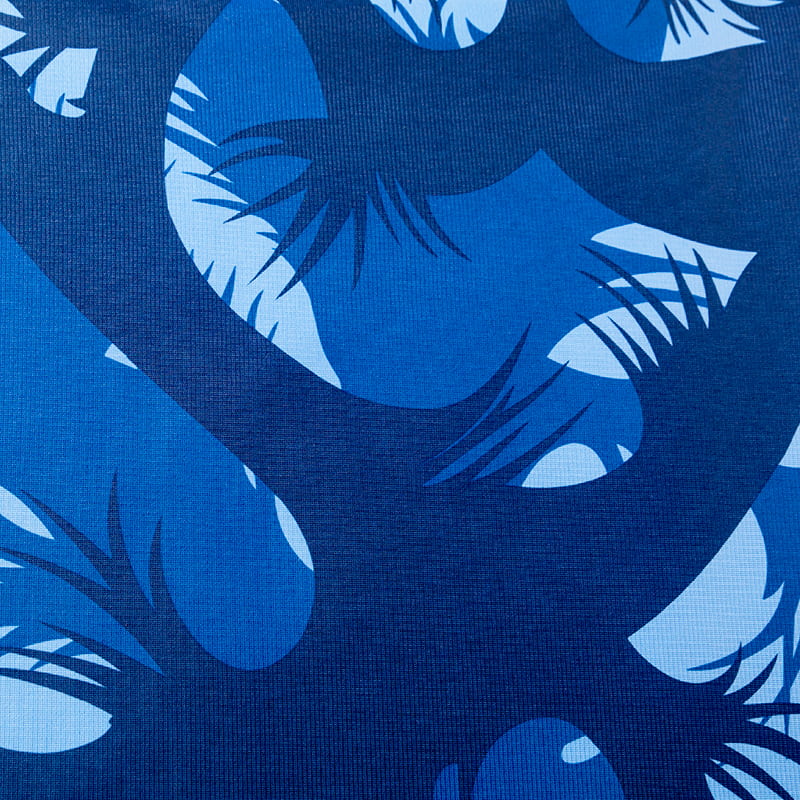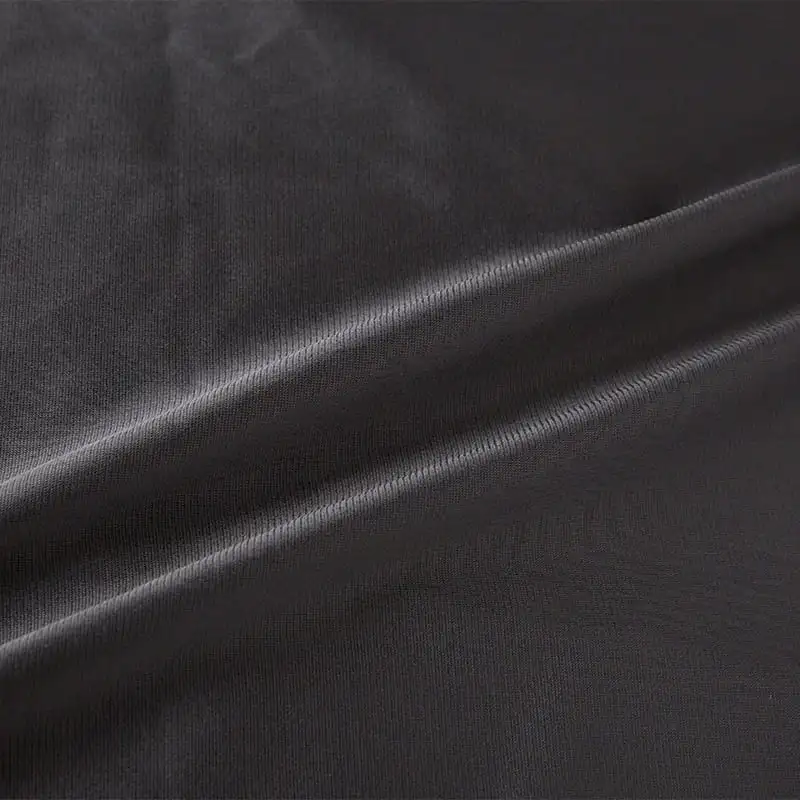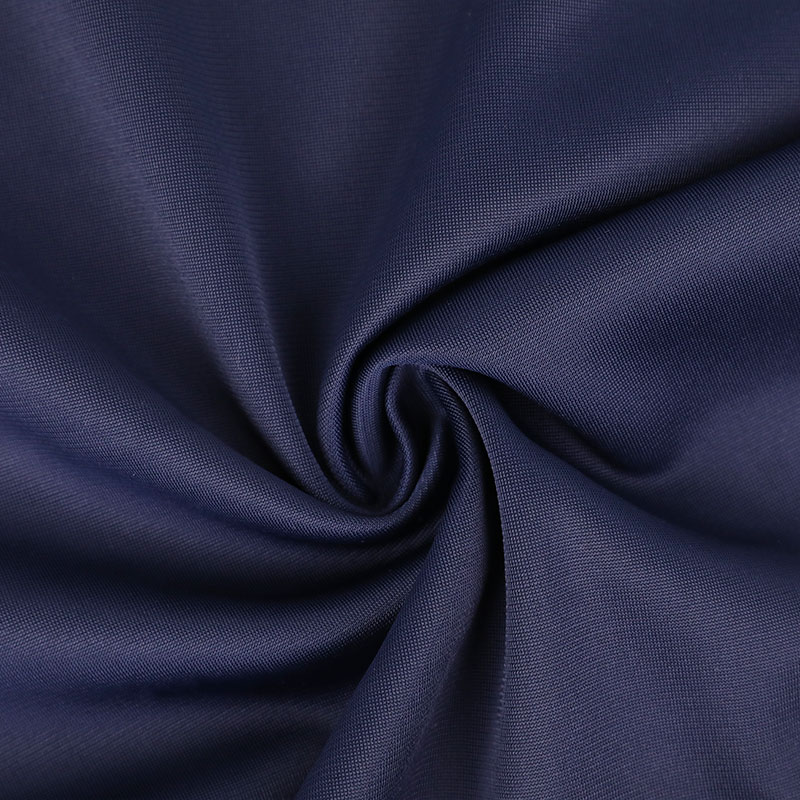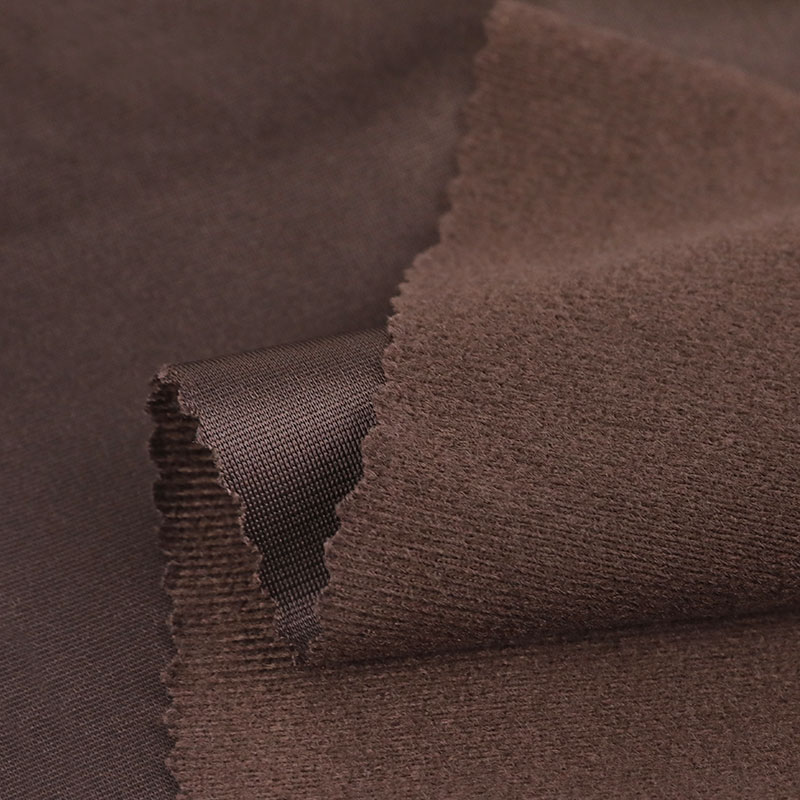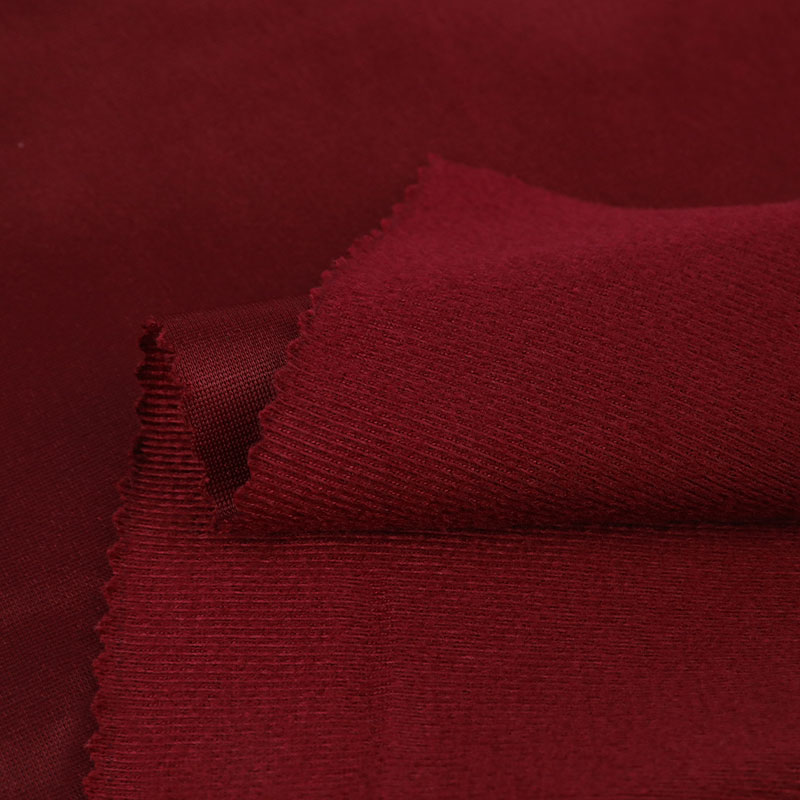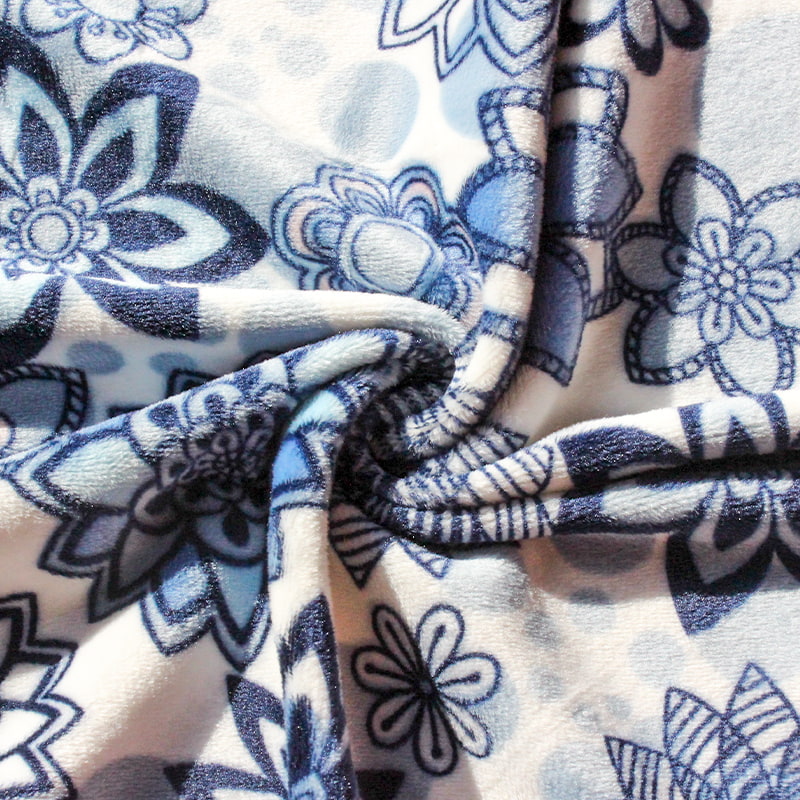Introduction to Warp Knitting Fabric
Warp knitting is a major textile manufacturing technique that creates fabric by forming interconnected loops in a vertical or lengthwise direction. Unlike weaving, where two sets of threads (warp and weft) interlace, or weft knitting, where a single yarn is looped horizontally, warp knitting utilizes multiple yarns, each fed to a specific needle. These yarns are arranged parallel to each other in the warpwise direction (similar to the warp yarns in weaving) and form loops that interlace with loops from adjacent yarns in a zig-zag or diagonal pattern. This process results in a fabric that is highly stable and resistant to unravelling.
1.1. Definition of Warp Knitting
Warp knitting is a major textile manufacturing technique that creates fabric by forming interconnected loops in a vertical or lengthwise direction. Unlike weaving, where two sets of threads (warp and weft) interlace, or weft knitting, where a single yarn is looped horizontally, warp knitting utilizes multiple yarns, each fed to a specific needle. These yarns are arranged parallel to each other in the warpwise direction (similar to the warp yarns in weaving) and form loops that interlace with loops from adjacent yarns in a zig-zag or diagonal pattern. This process results in a fabric that is highly stable and resistant to unravelling.
1.2. Key Differences Between Warp and Weft Knitting
The fundamental distinction between warp and weft knitting lies in how the yarn is supplied and how the loops are formed:
| Feature | Warp Knitting | Weft Knitting |
|---|---|---|
| Yarn Supply | Multiple yarns, each fed to an individual needle | Single yarn (or a few yarns) supplied |
| Loop Formation | Loops form vertically, interlacing diagonally | Loops form horizontally, interlacing in courses |
| Fabric Direction | Yarns run warpwise (lengthwise) | Yarns run weftwise (crosswise) |
| Run-Resistance | High (loops are interlocked) | Low (prone to unravelling if a stitch breaks) |
| Dimensional Stability | High | Moderate to low (more stretchable) |
| Machine Type | Primarily flatbed machines (e.g., Tricot, Raschel) | Circular or flatbed machines |
| Product Examples | Laces, nets, swimwear, industrial fabrics | T-shirts, sweaters, socks, hosiery |
1.3. Basic Principles of Warp Knitting
The core principle of warp knitting involves the simultaneous formation of loops by a set of needles, each engaging with a separate yarn. The process can be summarized by these key actions:
- Yarn Supply: A creel holds numerous yarn packages, and individual yarns are precisely guided to their respective needles.
- Needle Movement: Needles, typically bearded or compound needles, move in a coordinated manner to engage with the yarns.
- Loop Formation: As the needles move, they catch the yarn, form new loops, and then cast off previously formed loops. This creates a chain of interlocked loops.
- Guide Bar Movement: Guide bars, which hold the yarn guides, execute precise lapping movements. These movements determine how the yarns are laid over the needles, influencing the stitch structure and fabric pattern. The lateral movement of the guide bars is crucial for creating the characteristic diagonal interlacing of warp knitted fabrics.
- Sinker Action (on some machines): Sinkers, if present, help hold down the fabric and prevent it from lifting with the needles during loop formation, ensuring proper stitch definition.
Through the synchronized action of these components, multiple columns of loops are formed simultaneously, creating a stable and often intricate fabric structure. The precise movements of the guide bars allow for a wide variety of stitch patterns and fabric densities.
2. Types of Warp Knitting
Warp knitting encompasses several distinct techniques, each offering unique fabric characteristics and applications. The primary types are Tricot knitting, Raschel knitting, and Stitch Bonding.
2.1. Tricot Knitting
Tricot knitting is one of the most common and widely used warp knitting methods. It typically employs a single set of needles (bearded or compound) and two or more guide bars. Tricot machines are known for their high speed and efficiency, producing fabrics with a fine gauge and a relatively smooth surface.
- Characteristics: Tricot fabrics are generally lightweight, soft, and have good drape. They exhibit excellent dimensional stability and are run-resistant. The face of the fabric often shows fine, lengthwise wales (vertical ribs), while the back has crosswise floats or underlaps, giving it a slightly textured appearance.
- Stitch Structures: Common tricot stitches include the plain tricot stitch (which forms a stable, closed-loop structure), reverse tricot, and various lock-stitch variations. These structures contribute to the fabric's inherent stability and resistance to unravelling.
- Applications: Due to their smooth surface, stability, and comfort, tricot fabrics are extensively used in:
- Apparel: Lingerie, swimwear, activewear linings, intimate apparel, sportswear, and automotive interior linings.
- Home Textiles: Curtains, drapery linings, and bedding.
- Medical Textiles: Bandages and support garments.
2.2. Raschel Knitting
Raschel knitting is a more versatile warp knitting method compared to tricot, capable of producing a wider range of fabric structures, including intricate patterns, openwork designs, and heavy industrial textiles. Raschel machines typically use latch needles and often have multiple guide bars (sometimes up to 50 or more), allowing for complex yarn feeding and pattern creation.
- Characteristics: Raschel fabrics can vary greatly in weight, texture, and appearance. They often feature more open, lace-like structures, three-dimensional effects, and can incorporate a variety of yarns, including elastomeric, metallic, and fancy yarns. The use of multiple guide bars allows for sophisticated patterns and surface textures. Raschel fabrics generally have excellent dimensional stability and good run-resistance, though less dense structures may be more susceptible than compact tricots.
- Stitch Structures: Raschel machines can produce a vast array of stitch structures, including:
- Lace and Net Structures: Used for decorative fabrics, curtains, and mosquito nets.
- Power Net: Strong, open-mesh fabrics with high elasticity, used in shapewear and athletic apparel.
- Spacer Fabrics: Three-dimensional fabrics with two outer layers connected by a monofilament spacer yarn, creating cushioning and breathability.
- Technical Textiles: Geotextiles, agricultural nets, and industrial filtration fabrics.
- Applications: Raschel's versatility leads to diverse applications:
- Apparel: Laces, hosiery, sweaters (from coarse gauge machines), activewear, and intimate apparel.
- Home Textiles: Curtains, decorative fabrics, blankets.
- Technical and Industrial Textiles: Geotextiles for civil engineering, agricultural netting, protective textiles, automotive seating, composites, and medical textiles.
2.3. Stitch Bonding
Stitch bonding is a unique segment of warp knitting that combines elements of both knitting and nonwoven technologies. Instead of interlacing conventional yarns, stitch bonding machines use stitching elements (needles) to penetrate a pre-existing fiber web (a nonwoven mat, batting, or even a layer of parallel yarns) and introduce stitching threads to bind the fibers together. The stitching threads form warp-knitted loops, creating a fabric from the nonwoven material.
- Characteristics: Stitch-bonded fabrics can be produced from a wide range of fiber types and nonwoven structures. Their properties depend heavily on the type of web used and the stitching pattern. They often exhibit good bulk, warmth, and strength, especially when reinforcing fragile webs. They can also be designed for specific functionalities like filtration or insulation.
- Types of Stitch Bonding:
- Maliwatt: Uses conventional yarns to stitch a fiber web.
- Malimo: Uses a fibrous web as the base and stitches it with a second set of fibers or yarns to create a textile-like structure.
- Voltex: A variation that creates looped pile structures.
- Arachne: Uses a weft insertion system into the knitted loops, creating a woven-like structure.
- Applications: Stitch-bonded fabrics find use in:
- Industrial and Technical Textiles: Automotive interiors, insulation materials, filtration media, geotextiles, roofing materials, and medical disposables.
- Apparel: Linings, interlinings, and sometimes outerwear for specific applications where bulk and insulation are desired.
- Home Textiles: Blankets, mattress pads, and upholstery backings.
Each of these warp knitting types offers distinct advantages and contributes significantly to the vast array of textile products available today.

3. The Warp Knitting Process
The warp knitting process is a highly synchronized operation involving specialized machine components that work in unison to transform individual yarns into a stable fabric. Understanding these components and their functions is crucial to grasping how warp knitted fabrics are made.
3.1. Machine Components: Guide Bars, Needles, and Sinkers
The primary components of a warp knitting machine, whether tricot or raschel, are the guide bars, needles, and often sinkers.
- Needles: These are the primary loop-forming elements. Warp knitting machines typically use one of two main types of needles:
- Bearded Needles: Historically common, especially on tricot machines. They have a flexible "beard" that closes the hook during loop formation. Yarn is laid into the hook, the beard is pressed shut by a "presser bar," and the old loop is cast off over the closed hook as the new loop forms. They are known for their high speed but are more sensitive to yarn quality.
- Compound Needles: More prevalent on modern machines, particularly raschel machines, due to their versatility and ability to handle a wider range of yarns, including coarser ones. Compound needles consist of a hook and a sliding latch (or blade) that moves within the hook. The latch opens and closes the hook, allowing the yarn to be laid and the loop to be formed and cast off without the need for an external presser bar.
- Guide Bars: These are precision-engineered bars that hold a series of individual yarn guides (also known as "lappet guides" or simply "guides"). Each guide corresponds to a specific needle and is responsible for feeding its designated yarn to that needle. The guide bars perform crucial lateral (side-to-side) and swinging movements:
- Lateral Movement (Shogging): The guide bars move horizontally, "shogging" from side to side across the needle bed. This movement determines which needles the yarns are laid onto, directly influencing the stitch pattern and the interlacing of adjacent loops.
- Swinging Movement (Lapping): The guide bars also swing back and forth to lay the yarns into the hooks of the needles and then swing clear as the needles rise and fall. The specific combination of lateral and swinging movements, known as the "lapping movement" or "chain notation," defines the stitch structure. Machines can have multiple guide bars (two for basic tricot, many for complex raschel) to create intricate patterns and structures.
- Sinkers: While not present on all warp knitting machines (e.g., some simple tricot machines), sinkers are common on raschel machines and certain tricot machines. Sinkers are thin, blade-like elements positioned between the needles. Their functions include:
- Holding Down the Fabric: They help to hold the previously formed loops firmly down on the needle bed, preventing them from lifting with the rising needles.
- Loop Formation Assistance: They can assist in separating the new loop from the old loop and in casting off.
- Preventing Curling: By supporting the fabric, sinkers help to reduce the tendency of knitted fabrics to curl at the edges.
3.2. Yarn Preparation and Feeding
Proper yarn preparation is critical for efficient and high-quality warp knitting. The process typically involves:
- Warping: This is a crucial initial step. Thousands of individual yarns are wound parallel onto a large beam called a "warp beam" or "section beam." Each yarn on the warp beam will be fed to a specific needle on the knitting machine. This process ensures uniform tension and proper alignment of all yarns. Depending on the machine and fabric width, multiple section beams might be used and then combined into a single "loom beam" or "knitting beam."
- Creeling: For some applications or when multiple colors/types of yarn are needed, yarns might be fed directly from individual cones on a creel. However, for most continuous production, yarns are prepared on warp beams.
- Tensioning: As the yarns are drawn from the warp beam, they pass through tensioning devices. Consistent and precise tension control is vital to ensure uniform loop formation, prevent yarn breakage, and maintain fabric quality. Uneven tension can lead to defects like barré (horizontal stripes) or bowing.
- Guiding: The yarns are meticulously guided through a series of ceramic or polished guides, ensuring they reach the correct yarn guide on the guide bars without tangling or excessive friction.
3.3. Loop Formation in Warp Knitting
The loop formation process in warp knitting is a continuous and highly coordinated cycle involving the precise movements of the needles, guide bars, and sinkers (if present). While the exact sequence varies slightly between bearded and compound needles, the general principle is as follows:
- Old Loop Held: The previously formed loop rests on the stem of the needle below the hook (or between the hook and the latch).
- Yarn Laid (Lapping): The needle rises, lifting the old loop. Simultaneously, the guide bar with its yarn guides shogs (moves laterally) to position the new yarn over the needle. The guide bar then swings to lay the new yarn into the open hook of the needle.
- Hook Closing & Pressing Off (Bearded Needles) / Latch Closing (Compound Needles):
- Bearded Needles: A presser bar descends and presses against the beard of the needle, closing the hook.
- Compound Needles: The sliding latch moves forward, closing the hook.
- Loop Formation & Casting Off: As the needle continues its descent, the newly laid yarn is drawn through the old loop. The old loop, now trapped, slides off the closed hook (or past the closed latch), becoming part of the fabric structure. The new loop is now formed on the stem of the needle.
- Needle Rising & Repeat: The needle then begins to rise again, carrying the newly formed loop, and the cycle repeats.
The lateral shogging movement of the guide bars between successive loop formations is what creates the characteristic diagonal interconnections between the vertical loop columns, making warp knitted fabrics stable and run-resistant. The specific sequence of shogging movements across multiple guide bars dictates the ultimate stitch structure and fabric design.
4. Properties of Warp Knitted Fabrics
Warp knitted fabrics possess a distinct set of properties that differentiate them from woven and weft knitted materials, making them suitable for a wide range of applications. These properties stem directly from their unique loop formation and interlacing structure.
4.1. Dimensional Stability
One of the most significant advantages of warp knitted fabrics is their excellent dimensional stability. This means they resist stretching, shrinking, and distortion, particularly in the lengthwise (warp) direction, much more effectively than weft knitted fabrics.
- Reason: This high stability is a direct result of how the loops are formed. Each loop is interlocked with its neighbors in a diagonal or zig-zag pattern, preventing individual loops from easily unravelling or distorting. Unlike weft knitting, where a single broken yarn can cause a "run" down an entire column, warp knitted fabrics have multiple yarn systems, distributing stress and locking the stitches in place.
- Impact: This property is crucial for applications requiring precise fit, shape retention, and consistent performance, such as automotive interiors, industrial textiles, and tailored apparel components. Fabrics maintain their shape even after repeated washing and wear.
4.2. Run-Resistance
Warp knitted fabrics are renowned for their high run-resistance or "laddering resistance."
- Reason: As mentioned, the intricate interlacing of the individual yarn loops means that if one stitch breaks, the damage is typically localized and does not propagate down a column of stitches to create a long "run" or "ladder," as is common in weft knitted fabrics like hosiery. The adjacent loops hold the structure together.
- Impact: This makes warp knitted fabrics more durable and reliable in applications where snagging or tearing might occur, such as sportswear, industrial nets, and upholstery. It also contributes to a longer product lifespan.
4.3. Loop Density and its Impact
Loop density refers to the number of loops per unit area in a knitted fabric, typically expressed as courses per inch (CPI) and wales per inch (WPI). In warp knitting, it's often more accurately described by the "gauge" of the machine (needles per inch or 2 inches) and the chain notation which dictates the yarn lay-in.
- Impact of Higher Loop Density (Finer Gauge):
- Appearance: Results in a denser, smoother, and more opaque fabric. The individual stitches become less discernible.
- Hand (Feel): Often leads to a softer, more fluid drape, especially with fine yarns.
- Weight: Generally lighter in weight for a given fiber content due to finer yarns, but can also be heavy if using a high number of stitches.
- Strength and Durability: Increased strength and abrasion resistance due to more interlacing points and a more compact structure.
- Breathability: Can be less breathable due to the denser structure, though this can be engineered with open stitch patterns.
- Impact of Lower Loop Density (Coarser Gauge):
- Appearance: More open, sometimes mesh-like or lace-like structures where individual stitches are more visible.
- Hand (Feel): Can be bulkier, stiffer, or have a more pronounced texture.
- Weight: Can be heavier if using coarser yarns, or very light if creating an open net.
- Strength and Durability: May be lower than fine-gauge fabrics unless specifically engineered for strength (e.g., industrial nets with strong yarns).
- Breathability: Often highly breathable due to the open structure.
The ability to control loop density through machine gauge and stitch design allows for the production of fabrics ranging from fine, sheer lingerie to heavy-duty industrial nets and thick spacer fabrics, each optimized for its specific end-use.
4.4. Texture and Appearance
Warp knitted fabrics offer a vast range of textures and appearances, largely dependent on the type of warp knitting machine (Tricot, Raschel, Stitch Bonding), the specific stitch structure, and the yarns used.
- Tricot Fabrics: Typically have a smooth, relatively flat surface. The face often shows fine, vertical ribs (wales), while the back has slight horizontal floats (underlaps), giving it a subtly different texture. They can be very soft and lustrous, especially when made from filament yarns.
- Raschel Fabrics: Offer the widest variety. They can range from:
- Fine Laces and Nets: Open, airy, and decorative, often with intricate patterns.
- Power Nets: Stretchy, open mesh, often used for support.
- Terry Fabrics: Can be produced with loops on one or both sides, creating a towel-like texture.
- Velvet/Plush Fabrics: Achieved by cutting loops, creating a soft, pile surface.
- Spacer Fabrics: Three-dimensional structures with distinct face and back layers separated by a void or monofilaments, providing cushioning and breathability.
- Coarse Industrial Fabrics: Robust, often with visible, strong yarns and open structures.
- Stitch-Bonded Fabrics: Their appearance and texture are heavily influenced by the nonwoven base material and the stitching yarn. They can range from felt-like to fleece-like, or even have a quilted appearance if patterned stitching is used.
The ability to manipulate yarn type (filament, spun, textured, fancy), machine gauge, and guide bar movements provides designers and manufacturers with immense flexibility in creating warp knitted fabrics with diverse aesthetic and tactile qualities.
5. Advantages and Disadvantages of Warp Knitting
Like any textile manufacturing process, warp knitting offers a unique set of benefits and drawbacks that influence its suitability for various applications.
5.1. Advantages
Warp knitting boasts several significant advantages that contribute to its widespread use:
- High Dimensional Stability: As discussed, warp knitted fabrics are inherently stable and resist stretching, sagging, and shrinking, especially in the lengthwise direction. This is crucial for maintaining shape in products like automotive interiors, sportswear, and industrial textiles.
- Excellent Run-Resistance: Due to the interlaced nature of the loops, a break in one stitch typically does not lead to a complete "run" or laddering down the fabric, unlike many weft-knitted structures. This enhances durability and product longevity.
- High Production Speed: Warp knitting machines are generally much faster than weaving looms, leading to higher output rates and greater efficiency in fabric production. Modern machines can operate at very high speeds, producing large volumes of fabric quickly.
- Versatility in Fabric Structures: Warp knitting can produce an incredibly diverse range of fabrics, from fine, sheer laces and nets to dense, stable industrial textiles, three-dimensional spacer fabrics, and high-pile materials. The ability to use multiple guide bars and different stitch patterns allows for complex designs and textures.
- Ability to Use Different Yarns: Warp knitting machines can accommodate a wide variety of yarn types, including filament yarns (polyester, nylon, rayon), spun yarns (cotton, wool), elastomeric yarns (spandex), textured yarns, and even metallic or fancy yarns, allowing for diverse aesthetic and functional properties.
- Low Fabric Curl Tendency: Compared to weft-knitted fabrics, warp knits generally exhibit less tendency to curl at the edges, making them easier to cut, sew, and handle during garment or product manufacturing.
- Good Drape and Hand: Many warp knitted fabrics, particularly tricots, offer a soft hand and excellent drape, making them comfortable for apparel applications.
- Reduced Waste: The continuous nature of the process and the precise control over yarn feeding can lead to less yarn waste compared to some other textile manufacturing methods.
5.2. Disadvantages
Despite its numerous advantages, warp knitting also has certain limitations:
- Complexity and Cost of Machinery: Warp knitting machines are generally more complex and expensive than weft knitting machines. This higher initial investment can be a barrier for smaller manufacturers.
- High Yarn Preparation Cost: The warping process, which involves preparing hundreds or thousands of individual yarns onto beams, is a critical and costly step. It requires specialized equipment and precise control, adding to the overall production expense.
- Limited Extensibility/Stretch (compared to Weft Knits): While some warp knits (like power nets with elastomeric yarns) are highly stretchy, a plain warp knit typically has less stretch and recovery than a plain weft knit. This can be a disadvantage for applications where extreme stretch in all directions is desired (e.g., highly form-fitting hosiery or certain types of activewear).
- Difficult to Repair: Due to the interlocked nature of the stitches and the multiple yarn systems, repairing snags or damage in a warp knitted fabric can be very difficult or impossible, often requiring replacement of the entire section.
- Specialized Patterning Limitations: While versatile, the patterning capabilities of warp knitting are different from those of weft knitting. Complex patterning often requires a large number of guide bars and intricate chain notations, which can increase machine complexity and setup time. It's generally not as easy to create highly individualized, single-item patterns as with some computerized weft knitting machines.
- Lower Design Flexibility for Small Runs: Setting up a warp knitting machine for a new design involves preparing new warp beams, which can be time-consuming and costly. This makes it less flexible for small production runs or rapid design changes compared to weft knitting.
- Fiber Fraying: While run-resistant, cut edges of warp knitted fabrics can still fray, especially if not properly finished or hemmed, due to the exposed yarn ends.
6. Applications of Warp Knitted Fabrics
The unique combination of properties offered by warp knitted fabrics – including dimensional stability, run-resistance, versatility in structure, and high production speed – makes them suitable for an exceptionally wide array of applications across various industries.
6.1. Apparel
Warp knitted fabrics are extensively used in the apparel industry, ranging from intimate wear to technical sportswear.
- Lingerie and Intimate Apparel: Tricot fabrics are highly favored for lingerie due to their smooth surface, soft hand, excellent drape, and comfort. They are used for slips, nightgowns, bras, and underwear linings.
- Swimwear: The stability and quick-drying properties of warp knits, often incorporating elastomeric yarns, make them ideal for swimwear.
- Activewear and Sportswear: From supportive compression garments (power nets) to breathable linings and outer layers, warp knits are crucial in athletic apparel due offering stretch, moisture management, and durability.
- Outerwear Linings: Their smooth surface and stability make them excellent choices for linings in jackets, coats, and other outerwear.
- Workwear and Protective Clothing: Depending on the fiber content and structure, warp knits can be engineered for durability and specific protective properties in work uniforms.
- Laces and Trimmings: Raschel machines are widely used to produce intricate lace designs for decorative purposes on garments, as well as elastic and non-elastic trimmings.
- Footwear: Linings for athletic shoes and some types of footwear uppers can be made from warp knits, particularly spacer fabrics for breathability and cushioning.
6.2. Automotive Textiles
The automotive industry relies heavily on warp knitted fabrics for their durability, dimensional stability, and aesthetic appeal.
- Seat Upholstery: Warp knits provide robust and dimensionally stable fabrics for car seats, offering comfort and resistance to wear and tear. Raschel fabrics, including velours and 3D structures, are commonly used.
- Headliners: The fabric covering the interior roof of a car is frequently a warp knit, chosen for its stability, light weight, and ease of adhesion.
- Door Panels and Side Trims: Used for decorative and functional covering of interior panels.
- Carpeting Backings: Warp knitted structures can provide stable backings for automotive carpets.
- Safety Belts (in some applications) and Airbag Fabrics: Specific high-performance warp knits are engineered for these critical safety components, though weaving is also prominent here.
6.3. Industrial Textiles (Technical Textiles)
This is a rapidly growing area for warp knitting due to its ability to create strong, specialized, and high-performance fabrics.
- Geotextiles: Used in civil engineering for soil stabilization, erosion control, drainage, and road construction. Warp knits offer excellent strength-to-weight ratios and porosity.
- Agricultural Textiles: Includes netting for crop protection (bird nets, hail nets, windbreaks), shade cloths, and ground covers.
- Filtration Media: Fabrics designed to filter liquids or gases in industrial processes, often engineered with precise pore sizes.
- Protective Textiles: Materials for personal protective equipment (PPE), military applications, and industrial workwear, offering properties like cut resistance, fire resistance, or abrasion resistance.
- Composites Reinforcement: Warp knitted structures can serve as reinforcement layers in composite materials, providing directional strength.
- Medical Textiles: Bandages, surgical gowns, implantable devices (e.g., vascular grafts, hernia meshes), and support stockings leverage the stability, breathability, and controlled elasticity of warp knits.
- Conveyor Belts: Strong, stable warp knits form the base structure for certain types of lightweight conveyor belts.
- Packaging: Nets for packaging fruits, vegetables, and other products.
6.4. Home Textiles
Warp knitted fabrics bring a combination of aesthetics and functionality to home environments.
- Curtains and Drapery: Tricot and raschel fabrics are used for sheers, linings, and decorative curtains due to their good drape, stability, and ability to filter light.
- Upholstery: Durable warp knits are used for furniture upholstery, providing wear resistance and dimensional stability.
- Bedding: Mattress covers, pillow protectors, and some blanket types utilize warp knits for their comfort, breathability, and ease of care.
- Towels and Bath Mats: Warp-knitted terry fabrics can produce absorbent and durable towels.
- Cleaning Cloths: Microfiber cleaning cloths are often made using warp knitting techniques to create their highly absorbent and dirt-trapping structure.
The versatility of warp knitting allows continuous innovation, with new applications emerging as technology advances and material science progresses.

7. Factors Affecting the Quality of Warp Knitted Fabric
The quality of a warp knitted fabric is not solely determined by the machine itself but is a complex interplay of several crucial factors. Optimizing these elements is essential to achieve the desired fabric properties, performance, and aesthetic appeal.
7.1. Yarn Type and Quality
The characteristics of the yarn used are paramount to the final fabric quality.
- Fiber Type:
- Natural Fibers (Cotton, Wool, Silk): Impart properties like breathability, absorbency, warmth, and a natural hand. However, they may be less dimensionally stable or prone to shrinking compared to synthetics.
- Synthetic Fibers (Polyester, Nylon, Spandex, Rayon): Offer superior strength, abrasion resistance, quick drying, wrinkle resistance, and often excellent dimensional stability. Spandex (elastane) provides stretch and recovery. Different synthetics (e.g., nylon vs. polyester) have varying strength, luster, and dyeability.
- Blends: Combining different fiber types allows for customized properties (e.g., cotton/polyester for comfort and durability, nylon/spandex for stretch and strength).
- Yarn Count (Denier/Tex/Ne): This refers to the fineness or coarseness of the yarn.
- Finer Yarns: Produce lighter, softer, and more delicate fabrics with higher loop density and better drape.
- Coarser Yarns: Result in heavier, bulkier, and often more robust fabrics, or open, mesh-like structures. The yarn count must be compatible with the machine gauge.
- Yarn Construction (Filament vs. Spun, Textured):
- Filament Yarns: Made of continuous fibers, giving fabrics a smooth, lustrous, and often cool feel. They contribute to high strength and low pilling.
- Spun Yarns: Made of short, staple fibers twisted together, resulting in a softer, duller, and more absorbent fabric with a tendency to pill.
- Textured Yarns: Filament yarns that have been processed to introduce crimp or bulk, providing stretch, bulk, and a softer, more fabric-like hand.
- Yarn Uniformity: Inconsistent yarn thickness, twist, or strength can lead to fabric defects such as barré (horizontal streaks), uneven loop formation, and reduced strength.
- Yarn Lubrication and Waxing: Proper lubrication reduces friction between the yarn and machine parts, preventing heat buildup, minimizing yarn breaks, and improving the overall knitting process and fabric appearance.
- Dyeability and Color Consistency: For colored fabrics, the yarn must take dye evenly and consistently to avoid streaking or shade variations.
7.2. Machine Settings
Precise adjustment of machine parameters is critical for consistent quality and specific fabric characteristics.
- Machine Gauge: The number of needles per inch (or 2 inches) determines the fineness of the fabric. A higher gauge (more needles per inch) produces a finer, denser fabric. The yarn count must match the machine gauge.
- Chain Notation / Lapping Movement: This is the programmed sequence of lateral movements (shogging) of the guide bars. It directly dictates the stitch structure, fabric stability, pattern, and density. Any error in the chain notation will result in incorrect fabric construction.
- Yarn Tension: Consistent and appropriate tension on each individual yarn fed into the needles is paramount.
- Too High Tension: Can cause yarn breaks, tighter loops, narrower fabric width, and a stiffer hand.
- Too Low Tension: Can lead to slack loops, uneven stitches, wider fabric width, and a baggy appearance.
- Knitting Speed: While higher speeds increase production, excessive speed for a given yarn or machine setup can lead to increased yarn breaks, needle wear, and reduced fabric quality.
- Take-Up Tension: The tension at which the finished fabric is pulled away from the knitting zone affects loop length, fabric density, and stability. Correct take-up prevents fabric accumulation and ensures uniform dimensions.
- Needle and Sinker Condition: Worn, bent, or damaged needles and sinkers (if present) will cause dropped stitches, tucks, holes, and other fabric defects. Regular maintenance and replacement are essential.
- Feed-in Length/Stitch Length: This setting controls how much yarn is fed for each loop. It directly impacts the loop size, fabric density, and overall weight and appearance.
7.3. Finishing Processes
After knitting, the raw fabric (greige fabric) undergoes various finishing treatments that significantly impact its final quality, feel, and performance.
- Scouring and Washing: Removes impurities, knitting oils, and sizing agents, preparing the fabric for subsequent treatments.
- Dyeing and Printing: Imparts color and patterns. The quality of dyeing (evenness, penetration, colorfastness) is crucial.
- Drying: Must be controlled to prevent shrinkage, distortion, or damage to heat-sensitive fibers.
- Heat Setting: Particularly important for synthetic fibers (like polyester and nylon). Heat setting stabilizes the fabric dimensions, prevents further shrinkage, improves wrinkle resistance, and enhances drape.
- Chemical Finishes: Application of chemicals to impart specific properties:
- Softening Agents: Improve hand feel.
- Water Repellents: Create hydrophobic surfaces.
- Antimicrobial Agents: Inhibit microbial growth.
- Flame Retardants: Reduce flammability.
- Anti-pilling Agents: Reduce surface fuzziness and pilling.
- Mechanical Finishes:
- Brushing/Napping: Creates a soft, fuzzy surface by raising fiber ends.
- Shearing: Trims surface fibers to create a smooth, even pile (e.g., for velour).
- Compacting/Calendering: Improves dimensional stability and surface smoothness, often by compacting the fabric.
Each of these factors, from the initial yarn selection to the final finishing steps, plays a vital role in determining the overall quality, performance, and marketability of warp knitted fabrics.
8. Recent Advances in Warp Knitting Technology
The warp knitting industry is continually evolving, driven by demands for increased efficiency, greater versatility, sustainability, and the ability to produce innovative fabric structures with enhanced functionalities. Recent advances span improvements in machine design, control systems, and the development of entirely new knitted structures.
8.1. Innovations in Machine Design
Modern warp knitting machines are highly sophisticated, incorporating advanced engineering and electronics to push the boundaries of speed, precision, and versatility.
- Increased Automation and Digitization:
- Electronic Guide Bar Control: This is perhaps the most significant advance. Instead of mechanical chain links, modern machines use electronic control (e.g., servo motors) for guide bar movements. This allows for:
- Rapid Pattern Changes: Designs can be changed almost instantly by loading new pattern data, significantly reducing setup times and enabling quick response to market trends.
- Unlimited Pattern Repeats: Eliminates the physical constraints of mechanical chains, allowing for very long and complex pattern repeats.
- Finer Pattern Definition: Greater precision in guide bar movements allows for more intricate and detailed patterns.
- Integrated Monitoring Systems: Sensors and software continuously monitor knitting parameters (yarn tension, needle status, fabric take-up), providing real-time data to operators and often enabling automatic adjustments or alerts to prevent defects.
- Remote Diagnostics and Connectivity: Machines can be connected to networks for remote monitoring, diagnostics, and even software updates, improving maintenance efficiency and reducing downtime.
- Electronic Guide Bar Control: This is perhaps the most significant advance. Instead of mechanical chain links, modern machines use electronic control (e.g., servo motors) for guide bar movements. This allows for:
- Higher Speeds and Efficiency:
- Optimized Needle and Sinker Design: Continuous research into the geometry and materials of knitting elements reduces friction, wear, and improves overall machine stability at higher operating speeds.
- Reduced Vibrations: Improved frame designs and balancing mechanisms minimize vibrations, allowing for faster operation without compromising fabric quality.
- Energy Efficiency: Development of more energy-efficient motors and operational modes to reduce power consumption, aligning with sustainability goals.
- Enhanced Yarn Feeding Systems:
- Precisely Controlled Yarn Let-Off: Advanced systems for unwinding yarn from warp beams ensure extremely consistent tension, which is crucial for even stitch formation and defect prevention, especially at high speeds.
- Individual Yarn Tensioners: While not new, their precision and integration with electronic control systems have improved, ensuring uniform tension across all yarns.
- Wider Machine Widths: New machines are available in increasingly wider widths, maximizing production efficiency for applications like geotextiles, automotive textiles, and large rolls of apparel fabric.
8.2. Development of New Warp Knitted Structures
Innovation isn't limited to the machines themselves; new structures are constantly being developed to meet novel functional and aesthetic demands.
- Spacer Fabrics (3D Fabrics): These are a major breakthrough, consisting of two separate fabric layers connected by a third layer of monofilament "spacer" yarns. They create a distinct three-dimensional void, offering:
- Cushioning and Pressure Distribution: Ideal for seating, mattresses, and protective gear.
- Breathability and Moisture Management: The open structure allows for excellent air circulation.
- Lightweight and Stability: Offer structural integrity without excessive weight.
- Applications: Automotive seating, medical textiles, sportswear, footwear, office furniture.
- Multiaxial Fabrics: While traditionally associated with composites, warp knitting can produce multiaxial structures where yarns are laid at various angles (e.g., 0°, +45°, -45°, 90°) and then stitched together. This creates incredibly strong and stable reinforcement fabrics for composites used in aerospace, wind energy, and automotive industries.
- Hybrid Structures: Combining warp knitting with other textile technologies (e.g., woven elements, nonwovens, or even specific fiber placements) to achieve unique properties. This includes stitch-bonding techniques that integrate fiber webs for enhanced bulk or filtration.
- High-Performance and Smart Textiles:
- Integration of Functional Yarns: Developing structures that effectively incorporate conductive yarns, optical fibers, phase-change materials, or smart polymers directly into the knit.
- Wearable Technology: Creating flexible, comfortable fabrics that can house sensors, heating elements, or other electronic components for smart clothing.
- Enhanced Technical Properties: Designing fabrics for extreme conditions, such as improved fire resistance, cut resistance, UV protection, or anti-bacterial properties.
- Bi-stretch and All-stretch Fabrics: While warp knits traditionally have less stretch than weft knits, advancements in yarn feeding, elastomeric yarn integration, and specific stitch patterns (e.g., Power Net variations) allow for fabrics with significant stretch and recovery in multiple directions.
These ongoing advancements ensure that warp knitting remains a dynamic and vital sector of the textile industry, capable of producing high-performance and innovative materials for an ever-expanding range of applications.
9. Conclusion
9.1. Summary of Warp Knitting Fabric
Warp knitting stands as a cornerstone of modern textile manufacturing, distinguished by its unique method of loop formation where multiple yarns are interlaced vertically in parallel. This fundamental difference from weft knitting, which uses a single yarn horizontally, imbues warp knitted fabrics with several critical advantages.
Key characteristics that define warp knits include:
- Exceptional Dimensional Stability: They resist stretching and shrinking significantly, particularly in the lengthwise direction, making them ideal for applications requiring consistent shape and size.
- High Run-Resistance: Unlike many weft-knitted fabrics, a broken stitch in a warp knit typically does not unravel an entire column, contributing to superior durability.
- High Production Speeds: Warp knitting machines are remarkably efficient, capable of producing large volumes of fabric at very high speeds.
- Versatility: From fine, delicate laces and smooth lingerie fabrics (Tricot) to robust industrial nets, intricate patterns, and three-dimensional spacer fabrics (Raschel), and even composite-reinforcing materials (Stitch Bonding), warp knitting offers an unparalleled range of fabric structures and textures.
- Wide Yarn Compatibility: They can effectively utilize a diverse array of natural, synthetic, and specialty yarns, allowing for tailored performance and aesthetics.
These properties make warp knitted fabrics indispensable across a vast spectrum of applications, including comfortable and supportive apparel (lingerie, swimwear, activewear), durable automotive interiors (seat covers, headliners), high-performance industrial textiles (geotextiles, filtration, medical implants), and versatile home furnishings (curtains, upholstery).
9.2. Future Trends in Warp Knitting
The future of warp knitting is marked by continuous innovation, driven by technological advancements, increasing demands for sustainability, and the pursuit of new functionalities.
- Further Automation and Digitization: The trend towards fully automated and digitally controlled warp knitting machines will intensify. This includes more sophisticated electronic guide bar control for infinite pattern possibilities, AI-powered systems for real-time monitoring and predictive maintenance, and seamless integration into Industry 4.0 manufacturing environments. These advancements will lead to even higher efficiency, reduced human error, and greater production flexibility.
- Sustainable Production: Sustainability will remain a major driving force. This involves:
- Processing Eco-friendly Yarns: Increased use of recycled fibers, bio-based polymers, and sustainably sourced natural fibers.
- Energy-Efficient Machines: Development of warp knitting machines with lower energy consumption and reduced environmental footprints.
- Waste Reduction: Optimized processes that minimize yarn waste and enable closed-loop recycling of fabric scraps.
- Advanced Functional Textiles: The integration of "smart" capabilities into warp knitted fabrics will expand. This includes incorporating conductive yarns for wearable electronics, sensors for health monitoring, phase-change materials for temperature regulation, and advanced finishes for specific protective properties (e.g., enhanced fire resistance, antimicrobial properties, UV protection).
- Development of Novel Structures: Research and development will continue to push the boundaries of warp knitted structures, particularly in:
- 3D and Spacer Fabrics: Further refinement and diversification of multi-layered fabrics for enhanced cushioning, breathability, and structural applications in fields like orthopedics, automotive, and personal protective equipment.
- Lightweight Composites: Warp knitting's role in creating strong, lightweight reinforcement textiles for advanced composite materials (e.g., in aerospace, automotive, and civil engineering) will grow.
- Seamless and Whole Garment Production: While challenging due to the warp-wise nature of the process, advancements in machine capabilities may lead to more integral or near-seamless garment structures from warp knitting.
- Customization and Niche Markets: The increased flexibility of electronic machines will facilitate faster prototyping and cater to smaller, highly customized production runs, serving niche markets and fast-changing fashion demands.
- Regional Growth: The global warp knitting market, especially for machinery, is projected to grow significantly, with Asia Pacific (particularly China, India, and Bangladesh) leading due to robust manufacturing presence and increasing demand for both apparel and technical textiles.
In summary, warp knitting is a dynamic and high-performing textile technology. Its inherent strengths, coupled with ongoing technological innovation and a growing emphasis on sustainability and specialized functionalities, ensure its continued relevance and expansion into an even broader range of products and industries in the future.

 English
English Español
Español